In cars containing engines with internal combustion, energy is produced when gasoline is fired, and power is transmitted through the spark plug.
When the firing process happens, though, carbon powder residue from the gasoline forms on the piston’s head and in the engine valve.
This buildup will turn into gunk sooner or later. This happens because of the vapor that comes from the oil when it heats up. Engine oil of an inferior quality can also cause this.
You may soon have engine problems like abnormal engine sound, atypical fuel consumption, diminished engine power, and sometimes, a total engine breakdown.
How Do I Know if My Piston Is Dirty?

-
Too much smoke
Lots of exhaust smoke coming out of your vehicle could be a sign of faulty or dirty piston rings.
The smoke will also look a little abnormal. It usually comes out thick with gray and blue tones. Often, a burning oil smell accompanies the smoke.
This happens because as the piston rings fail, engine oil leaks into the combustion chamber. When this happens, the oil burns, which creates the smoke and smell.
-
Elevated oil consumption
When the piston rings become worn and the engine oil leaks, this leads to more oil consumption than what the car needs.
Instead of your engine oil only needing to be changed occasionally or every 3,000-5,000 miles, you’ll now have to change it regularly.
This causes you to spend a lot more money than you need to on oil. If you see yourself changing your oil more than you need to, it would be a good idea to check your piston or schedule a cleaning.
-
Acceleration problems
When your piston gets worn, your engine will lose acceleration power as less compression takes place.
Your vehicle might take a lot longer than usual to speed up or not speed up at all. If your car displays this symptom, a replacement, instead of a cleaning, might be needed.
How to Clean Pistons Without Taking Out Parts: Step-By-Step
-
Turn the engine off
The first thing you need to do is turn off your engine and make sure you are in a well-aired area.
Disconnect the air intake from the throttle body and use a valve and combustion chamber cleaner to remove the carbon.
The additives in the cleaner help dissolve the carbon deposits. Make sure to take out all the residue before moving on to the next step.
-
Clean the gunk off the fuel rail
Make sure that the engine is turned off before you execute this step. Clean the engine’s fuel stream and rail.
To thoroughly and effectively do this, use a cleaner meant for the car’s injection and combustion chamber.
To do this, disconnect the fuel rail from the tank. Then, attach the injection pressure apparatus and pour in the cleaner. After, start the car and put it in idle until it finally turns off to signify that the clean is done.
-
Use a substance to enhance gasoline power
Another thing to do is to enhance gasoline quality. If the gasoline is of poor quality, it can cause issues. Use a gasoline enhancing substance to clean the fuel system.
Add the gasoline enhancer just before you fill up your tank. This way, you can mix the fuel enhancers into your fuel injectors as soon as you start your engine. When your tank is completely empty, all the substances would have been absorbed.
-
Add Engine Oil Enhancers
A good way to make your piston and engine part cleaner is to clean the engine oil flow. To do this, use products that boost engine performance.
These products help soften and dissolve the sludge, so it is easier to clean. All you need to do is add in the products into your engine oil and leave the car running for about thirty minutes.
-
Top up the engine oil
The last thing to do is to top up engine oil. This makes it harder for the sludge to form.
For added quality, use oil enhancing products that provide your engine with heat protection. Products that contain antioxidants and potent detergency give the best results. Only add the enhancers after the engine oil has been changed to make sure the oil is well protected.
Carbon Cleaning Tips
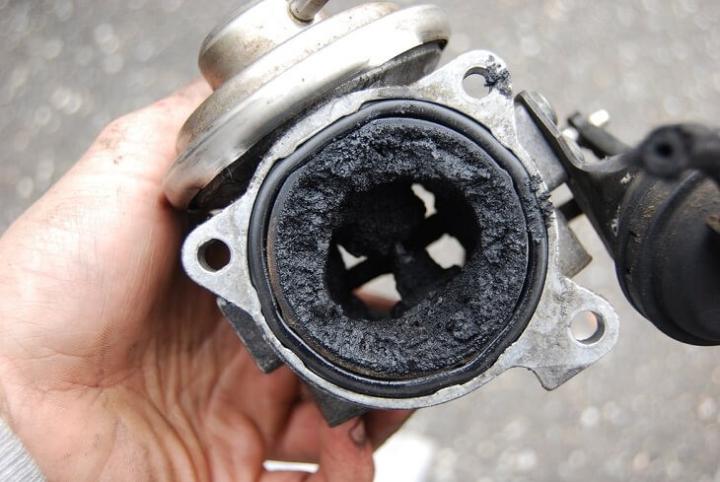
-
Use Seafoam to clean carbon build up
Sea Foam helps minimize carbon build up progressively.
It doesn’t completely erase the build up and isn’t as aggressive as a lot of other cleaners but still does the job. You can spray it in chamber areas and intake valves to speed things up.
-
Switch to a synthetic oil
Synthetic oil helps to keep your engine cleaner as it contains natural gas instead of crude oil that always comes with impurities.
Synthetic oil also has more uniform molecules instead of the molecules in conventional oil, which differ in shape and purity.
A cleaner oil helps you keep a cleaner engine. An engine relatively free of the impurities that cause the engine problems.
-
Add STA-BIL and Marvel Mystery Oil to your fuel
STA-BIL and Marvel Mystery Oil are fuel treatments that help the engine reach maximum power and performance.
They do this by cleaning the engine from the inside out, increasing fuel economy, and protecting the fuel against extreme temperatures.
To use, add four ounces of the product for every ten gallons of fuel you have.
-
Use a carburetor cleaner that has a nozzle
When your carburetor cleaner has a nozzle, this makes it easier to perform a deep clean and get to areas that would be unreachable.
This keeps your engine cleaner and also stops an over abundance of build in certain areas.
Tips to Clean Cylinders Without Removing Pistons
-
Lube and rotate cylinders to clean dust
If your cylinders are just dusty and not grimy, then you can get away with just lubing and rotating.
Chain lube and other slippery substances that are car friendly would work.
If your cylinders are grimy and dirty, though, then you will need to dismantle them.
-
Power wash with almost hot steam
Another thing you can do is power washing in hot, almost steamy, water. Soak the cylinders in some kind of degreaser before doing this for the best results.
To get most of the water out, roll the cylinder around and then leave it alone, preferably in a warmer environment where the leftover water can evaporate.
-
Wash off dirt and dust with Varsol or Kerosene
If your cylinders are only a little dirty, you can blow clean them with an air hose (or something that works similarly) and lightly wash with Varsol or Kerosene.
-
Use soapy water to wash and dry with compressed air
Use heated, soapy water to thoroughly wash the dirt and grime off the cylinders.
Afterward, blow off the moisture with compressed air and wipe with paper towels. Give the cylinder a light oil after you are satisfied with the results.
How to Prevent Your Pistons From Getting Dirty?
- Use good quality gasoline
Investing in good quality gasoline will help you slow down the buildup of carbon in your car.
This helps you save money on cleanings as you won’t have to get them done as much. Better quality gasoline also just helps your car run better, overall, so that’s an added plus.
- Check oil levels
Watch the oil levels in your car often, and top up or change the oil when necessary. The carbon build-up is more common when oil levels are low, so keeping up with your oil will save you a headache.
Also, consider switching to a synthetic oil if you don’t already use one.
- Install recommended oil filters
An oil filter helps remove impurities that can accumulate in the engine oil over time. These are especially common in conventional oils.
An oil filter helps you keep a cleaner motor oil, which will minimize carbon build up and stop your piston from getting dirty.
- Check on your car regularly with your mechanic
The best way to prevent any type of issues with your car or catch it early is to schedule regular checkups and maintenance with your mechanic.
This way, the carbon buildup can be addressed more often, which prevents it from getting bad.
FAQs
1. Does WD 40 remove carbon?
Ans. Yes, it does. But as WD 40 is a general degreaser and rust remover, it also contains chemicals that can harm the engine. Try using a product that is made to be used on cars.
2. Does carburetor cleaner remove carbon?
Ans. Yes, they remove carbon but we mostly find carburetors in older cars, not modern ones. For the best clean, use a cleaner with strong aerosols.
3. Does carbon dissolve?
Ans. Yes, carbon can be dissolved in water. Cold water works better than hot water.
4. Will the engine flush clean piston rings?
Ans. No, although it will support your rings to move better but will not have any effect on the cleanliness of your piston rings. An engine flush is actually used to get rid of buildup and gunk by circulating oil through the engine.
5. What causes carbon buildup on pistons?
Ans: When oil leaks from valves and pistons, it gathers into the combustion chamber. There the oil gets burned partially during engine running times and forms carbon.
6. Can carbon cleaning damage your engine?
Ans: Technically the answer is “No” if you use the proper way to clean them. always use a renowned and trusted company to do this job if you are not interested in doing it yourself.
It is highly recommended to clean carbon from your engine especially if your car is older and started losing its performance and showing reduced fuel efficiency.
7. Does kerosene remove carbon?
Ans: Yes, kerosene can soften carbon. You can pour kerosene or hydrogen peroxide through the carburetor’s air valve while the engine is running.


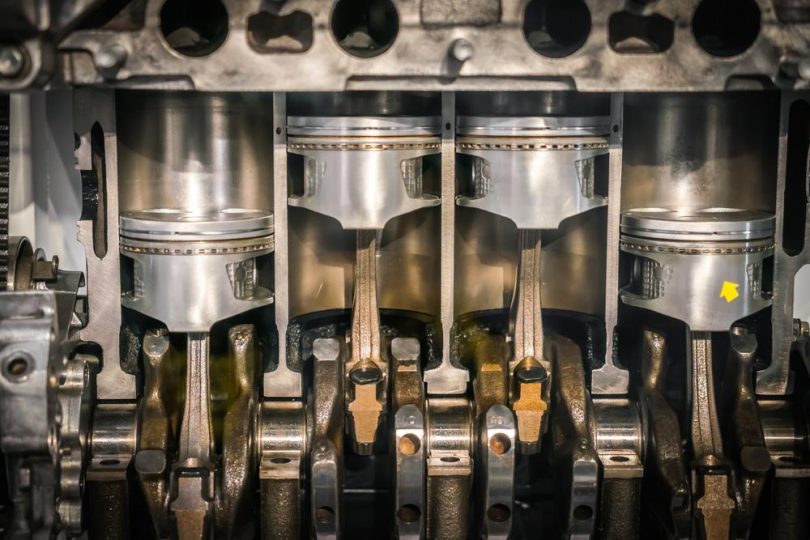


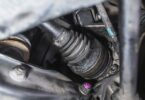

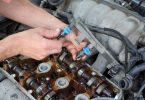
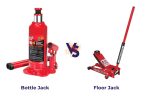

Leave a Comment